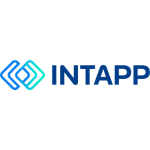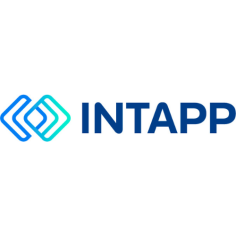Intapp workspaces content connector: improve document management by connecting iManage and NetDocuments to Microsoft Teams
Many firms use a document management system (DMS) such as Intapp Documents for storing essential matter information. However, firms using a legacy DMS provider other than Intapp Documents — such as iManage and NetDocuments — may encounter difficulties around collaboration.
Although the iManage and NetDocuments knowledge work platforms are widely used by law firms, they lack many advanced capabilities — such as real-time co-authoring — that tools like Microsoft 365 and Microsoft Teams provide to help legal professionals work on documents quickly and easily.
As a result, professionals tend to use both platforms in tandem: a DMS for data storage, and Microsoft Teams for collaboration. But checking documents in and out of the legacy DMS and collaborating on them via Microsoft Teams can introduce version-control problems, leading to confusion, errors, and duplicative effort. For example, one professional might work on a document using one platform while another works on it using the other. Or a professional might upload a new document to Microsoft Teams without also adding it to the DMS, making it difficult for other team members to find and access it later.
Intapp Workspaces content connector — along with its parent suite, Intapp Collaboration & Content — can help your legal teams combine the power of your legacy DMS provider and Microsoft Teams to store and share documents without compromising security or efficiency.
Connecting your system of record to your collaboration platform
Intapp Workspaces content connector connects Microsoft Teams to NetDocuments (a cloud-based solution) as well as the cloud-based and on-premises versions of iManage.
Intapp Workspaces content connector lets you check a document out from your legacy DMS provider directly to Microsoft Teams so you can collaborate with everyone who is working on the matter. In the originating DMS, the document will display which user checked it out and to which Microsoft Teams channel, providing transparency to the rest of the firm and help prevent confusion among teams.
Additionally, each matter team within Microsoft Teams is linked to a specific matter based DMS space, so the software automatically knows where to check documents in and out.
Collaborating on documents and tracking changes
Once in Microsoft Teams, you can take advantage of the software’s co-authoring capabilities and collaborate with multiple people in real time. Co-authoring, modern commenting, and document-centric conversations within Microsoft 365 are proving to be a game-changer for collaboration. Matter teams no longer have to pass sensitive documents via email and worry about version control or security; instead, they can bring the document from their system of record (DMS) into their system of collaboration (Microsoft Teams), thereby increasing efficiency and effectiveness.
Once you’ve finished collaborating on a document, the document can be checked back into your legacy DMS provider via the Intapp Workspaces content connector tab within the matter team. You can either save the document as a new version or replace the existing version.
Just as your legacy DMS displays who checked out a document, the software’s version history and audits also show who checked it back in. You can also view the document’s audit history — and any other edits that were made to it within Microsoft Teams — via Microsoft 365’s auditing functionality provided by Microsoft Purview.
If your firm is worried about teams accidentally uploading new documents to Microsoft Teams rather than your legacy DMS provider, you can set up Intapp Workspaces content connector to automatically transfer all documents uploaded to the matter team’s Files tab to your DMS. This provides reassurance that Microsoft Teams won’t become a “shadow DMS” running alongside your main system of record.
Firms can also leverage Intapp Workspaces to automatically check documents back in for certain situations, such as when a matter is closing and the Microsoft Teams channel is being removed. In this case, the audit history will show the documents as being checked in by your automated account.
Ensuring your data is secure
Securely storing information is another major concern of professional services firms. When email first saw massive adoption within firms, there were concerns around needing to file emails containing business decisions into the system of record. Legacy DMS providers enabled this through plugins for email clients like Microsoft Outlook. With the medium for conversation moving to instant messaging (IM), primarily via Microsoft Teams, the concern is now to ensure that those messages are stored on record, especially once the matter closes.
Intapp Workspaces content connector helps you securely store key messages by enabling the user to save specific or all posts to the DMS as a PDF. For total assurance the entire chat history can also be saved automatically upon closure of the matter.
The combination of your legacy DMS provider, Microsoft Teams, and Intapp Workspaces content connector provides you the best of all worlds. Your legacy DMS remains your strategic system of record where work is stored, while Microsoft Teams becomes your center of work and collaboration.
Contact us to learn more or schedule a demo of Intapp Collaboration & Content. You can also view Intapp Workspaces content connector in action in the video below.



